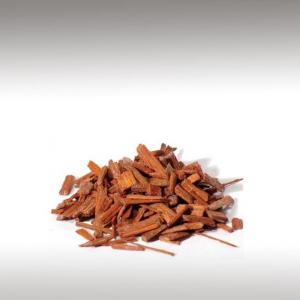
SANDALWOOD ESSENTIAL OIL (SANTALUM ALBUM) - ESSENTIAL OILS

BASE / GENERAL DATA
Information submited: March 27, 2015 Modified: March 22, 2018 By: OperaDreamhouse
Botanical Name: Santalum album
Common Method of Extraction: Steam distillation
Part Typically Used: Chipped heartwood
Color: Clear with a Yellow Tinge
Consistency: Medium - Thick
Perfumery Note: Base
Strength of Initial Aroma: Woody, exotic.
Sandalwood oil is from India and extracted from Santalum Album of the Santalaceae family and is also known as East Indian Sandalwood, Santal, Saunders and Sandalwood Mysore.
Santalum Album or Indian Sandalwood is a small tropical tree, and is the most commonly known source of Sandalwood. It can take thirty to sixty years for a tree to reach full maturity, when it is cut and distilled.
The plant is widely cultivated and long lived, although harvest is viable after 40 years. Etymologically it is derived from Sanskrit "Chandanam - Sandanam - Sandalum - Sandal".
Sandalwood is an evergreen, parasitic tree that burrows its roots into other trees. It normally grows in sandy or stony red soils, but a wide range of soil types are inhabited.
The height of the evergreen tree is between 4 and 9 metres. They may live to one hundred years of age. The reddish or brown bark can be almost black and is smooth in young trees, becoming cracked with a red reveal. The heartwood is pale green to white as the common name indicates.
The documented use of the wood goes back 4000 years and caravans carrying this wood from India to Egypt, Greece and Rome were a familiar sight. Many temples were built from the wood and the Egyptians used the oil in embalming.
While there are other species of Sandalwood, including Red Sandalwood, Australian Sandalwood (Santalum Spicatum) and New Caledonian Sandalwood (Santalum Austrocaledonicum), these are quite different from true Santalum Album and have very different properties and fragrances.
The heartwood is the most precious part of the Sandalwood tree, and the best heartwood comes from the roots. Sapwood yields a lower quality oil. Older trees have more heartwood, and so are more highly prized.
For each extraction method, the quality of the final Sandalwood oil will depend upon the quality of the wood, the length of distillation time, and the experience of the distiller.
These days, Sandalwood essential oil is extracted primarily by steam distillation, a process in which super heated steam is passed through the powdered wood. The steam helps to release and carry away the essential oil that is locked in the cellular structure of the wood. The steam is then cooled and the result is Sandalwood hydrosol and Sandalwood essential oil.
The oil will improve with age (unlike some other essential oils which degrade with age), and you will likely never be able to replace it.
Sandalwood is used in many different ways in the spiritual traditions of the East. It is used as incense in temples or on personal altars to remind us of the fragrant realms of the heavenly realms. Deities of various kinds are fashioned from Sandalwood, then installed in a shrine or temple or placed upon the home altar.
Meditation beads or malas are made with Sandalwood in which amantra or a personal prayer is repeated as the beads roll through the fingers.
Sandalwood oil is rare and expensive and the price is going up rapidly as the Indian government places tighter regulations on its production and export.
Common Method of Extraction: Steam distillation
Part Typically Used: Chipped heartwood
Color: Clear with a Yellow Tinge
Consistency: Medium - Thick
Perfumery Note: Base
Strength of Initial Aroma: Woody, exotic.
Sandalwood oil is from India and extracted from Santalum Album of the Santalaceae family and is also known as East Indian Sandalwood, Santal, Saunders and Sandalwood Mysore.
Santalum Album or Indian Sandalwood is a small tropical tree, and is the most commonly known source of Sandalwood. It can take thirty to sixty years for a tree to reach full maturity, when it is cut and distilled.
The plant is widely cultivated and long lived, although harvest is viable after 40 years. Etymologically it is derived from Sanskrit "Chandanam - Sandanam - Sandalum - Sandal".
Sandalwood is an evergreen, parasitic tree that burrows its roots into other trees. It normally grows in sandy or stony red soils, but a wide range of soil types are inhabited.
The height of the evergreen tree is between 4 and 9 metres. They may live to one hundred years of age. The reddish or brown bark can be almost black and is smooth in young trees, becoming cracked with a red reveal. The heartwood is pale green to white as the common name indicates.
The documented use of the wood goes back 4000 years and caravans carrying this wood from India to Egypt, Greece and Rome were a familiar sight. Many temples were built from the wood and the Egyptians used the oil in embalming.
While there are other species of Sandalwood, including Red Sandalwood, Australian Sandalwood (Santalum Spicatum) and New Caledonian Sandalwood (Santalum Austrocaledonicum), these are quite different from true Santalum Album and have very different properties and fragrances.
The heartwood is the most precious part of the Sandalwood tree, and the best heartwood comes from the roots. Sapwood yields a lower quality oil. Older trees have more heartwood, and so are more highly prized.
For each extraction method, the quality of the final Sandalwood oil will depend upon the quality of the wood, the length of distillation time, and the experience of the distiller.
These days, Sandalwood essential oil is extracted primarily by steam distillation, a process in which super heated steam is passed through the powdered wood. The steam helps to release and carry away the essential oil that is locked in the cellular structure of the wood. The steam is then cooled and the result is Sandalwood hydrosol and Sandalwood essential oil.
The oil will improve with age (unlike some other essential oils which degrade with age), and you will likely never be able to replace it.
Sandalwood is used in many different ways in the spiritual traditions of the East. It is used as incense in temples or on personal altars to remind us of the fragrant realms of the heavenly realms. Deities of various kinds are fashioned from Sandalwood, then installed in a shrine or temple or placed upon the home altar.
Meditation beads or malas are made with Sandalwood in which amantra or a personal prayer is repeated as the beads roll through the fingers.
Sandalwood oil is rare and expensive and the price is going up rapidly as the Indian government places tighter regulations on its production and export.

SPIRITUAL PRACTISES DATA

MEDICINE / HEALTH DATA

BEAUTY / COSMETICS DATA

FOOD / COOKING DATA
COMMENTS
No comments.
Newest mixtures containing Sandalwood Essential Oil (Santalum Album):

Exotic - smelling body scrub
July 11, 2015


